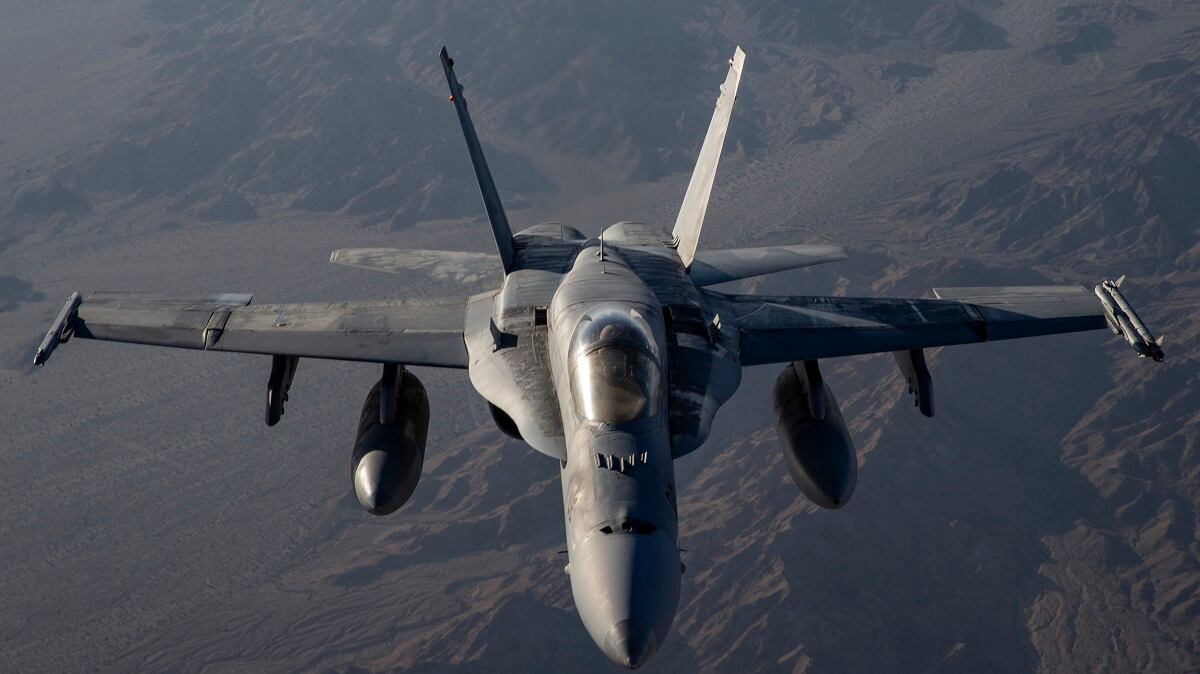The Corps is looking to install antennas in its F/A-18 C/D Hornets to help the aircraft defeat GPS jammers.
In a request for information posted in early June by Naval Air Systems Command, or NAVAIR, the Corps wants to install the anti-jam antennas known as the Air Navigation Warfare Program, or NAVWAR, in 120 of the legacy Hornets.
The anti-jamming antenna “provides Global Positioning System (GPS) protection for Naval Air platforms by allowing for continued access to GPS through the use of Anti-Jam (AJ) Antenna Systems designed to counter GPS Electronic Warfare threats from intentional and unintentional interference,” Michael Land, a spokesman for NAVAIR, told Marine Corps Times in an emailed statement Tuesday.
The development comes as U.S. aircraft have faced mounting electronic warfare attacks against aircraft in Syria.
Army Gen. Tony Thomas, the commander of U.S. Special Operations Command, told audience members at a conference in April that adversaries were trying to bring down AC-130 gunships in Syria using electronic warfare, or EW.
“Right now in Syria, we’re in the most aggressive EW environment on the planet, from our adversaries,” Thomas said. “They’re testing us every day, knocking our communications down, disabling our AC-130s, et cetera.”
The Corps is amid an overhaul of its forces and equipment to prepare for a potential fight with near-peer adversaries like Russia and China.
Both countries boast an impressive array of electronic warfare capabilities. Russia has been using the Syrian battlefield to hone its EW skills.
The top Marine has oft repeated the threats posed to GPS systems from rising adversaries and says the Corps needs to be prepared to fight in GPS denied environments.
The F/A-18 is the Corps’ bridging aircraft as it moves to the new high-tech F-35. As the Corps transitions the older legacy Hornets are undergoing a service life extension, meaning the aircraft are being updated to handle the modern battlefield.
“Installation in F/A-18 A-D helps ensure continued mission capability as the service life of the aircraft is extended and facilitates supportability by using more common equipment,” Land said.
The Navy and the Marine Corps already use the anti-jamming GPS antenna in a number of airframes, according to Land.
“Typical installations replace a platform’s existing GPS antenna with a NAVWAR antenna and separate antenna electronics, while leaving a platform’s GPS receiver in place,” Land added.
The Corps expects the F/A-18 to be in sunset by 2030.
As the Corps moves to the F-35 and phases out its Hornets, the legacy fighters will consolidate on the West Coast by 2018 with the exception of VMFA (AW)‐242, which will remain aboard the Corps’ air station at Iwakuni, Japan until it transitions to the F-35 in 2028, according to the Corp’s 2018 aviation plan.
Shawn Snow is the senior reporter for Marine Corps Times and a Marine Corps veteran.





